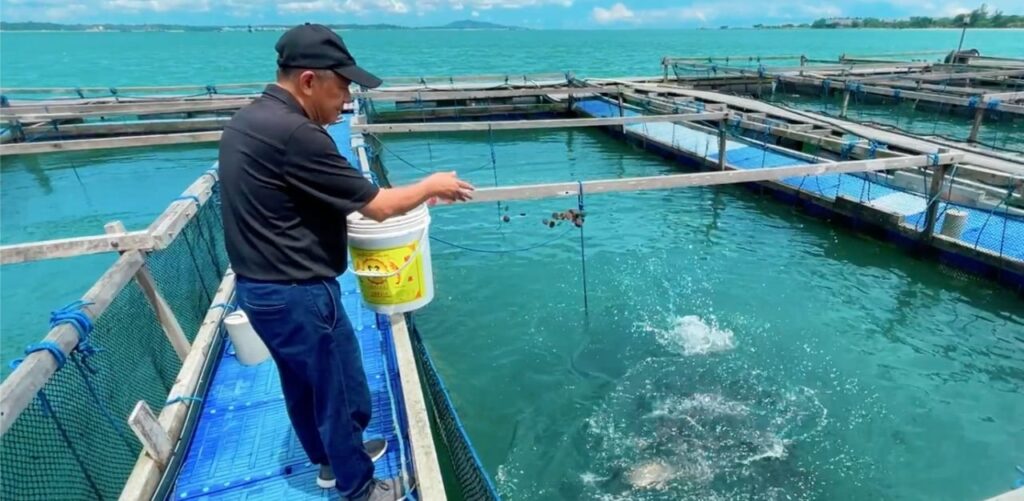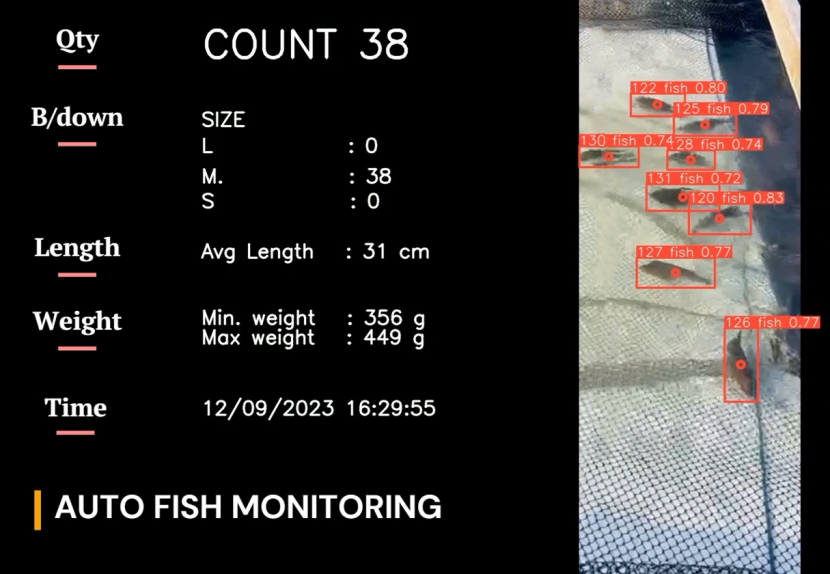The Fish Farmer supplies a diverse selection of fresh and naturally grown fish from our farms, across Singapore. Our products can be found in well-known online and physical retail outlets like NTUC FairPrice, Amazon Fresh, and SGFreshMart.sg, as well as in esteemed restaurants like Elfuego and prominent hotels like PARKROYAL Hotel & Resorts. Among our top-selling items are the naturally cultivated fish varieties such as barramundi, red snapper and milkfish.
At present, The Fish Farmer holds the following certifications:
• Good Aquaculture Practice (GAP) Certification
• Industry Organization for Standardization (ISO) 22000:2018
• Marine Stewardship Council (MSC) & Aquaculture Stewardship Council (ASC) Chain Of Custody Certification
The certificates our business holds demonstrate our commitment to adopting the best practices in quality assurance, safety and sustainability across the entire production cycle of our goods. This makes us the preferred distributor for our customers.
The Fish Farmer’s Efforts in Getting Singapore to Reach its “30 By 30” Goal
As Singapore strives to achieve its goal of producing 30% of its nutritional needs by 2030, The Fish Farmer has been adopting IoT and AI technologies in order to streamline and maximize efficiency in our farming operations to assist Singapore in reaching its 30 By 30 goal.
Low Dissolved Oxygen in The Fish Farmer’s Fish Farms
The Fish Farmer has farms in 2 locations; Lim Chu Kang and Changi. Fish require dissolved oxygen to breathe. If the dissolved oxygen level in water is too low, it will affect the fish. The water quality at our Lim Chu Kang farm experiences significantly lower levels of dissolved oxygen in the water compared to the farm in Changi. The farms low dissolved oxygen levels led to the implementation of water quality monitoring in both locations.

Adopting technology on the farm
To tackle the low dissolved oxygen challenge in both of our farms, The Fish Farmer decided to adopt the use of an IoT water quality monitoring technology. We worked on developing, testing, and implementing this technology to remotely monitor dissolved oxygen levels around the farms and its fluctuations throughout the day and night. Additionally, the system alerts the farmers of the decrease in dissolved oxygen, prompting the farmers to activate aerators and pumps to increase the dissolved oxygen levels in the water. This helps to increase productivity in the farm using new technology.


“The quality of the water is not something we can observe with the naked eye. The system has made it much easier for me when it comes to monitoring water quality as I can easily receive alerts for deviation in the water quality, allowing me to take corrective actions and focus on other tasks,” said Soe Pyae Kyaw, The Fish Farmer’s Farm Manager.
Like insurance, the cost of prevention is always lower than the cost of reaction. This new technology helps The Fish Farmer in terms of its reliability and providing farmers with peace of mind, allowing them to focus on other areas of operations.
Usage of AI in the Farms

On top of using IoT, The Fish Farmer also adopted the use of AI technology, developed by ourselves, for both fish counting and estimation of fish weight and length. Before the use of AI on the farms, our farmers relied on manual fish harvest counting, which was time-consuming and labour-intensive. Furthermore, we faced challenges in determining and estimating fish populations in each of the farms. Farmers were also unable to analyze whether the fish were growing healthily based on the fish’s length and weight in the farms.
With AI, the technology helps us to overcome these challenges. The fish can grow without stress during population estimation, and it minimizes the wastage in fish feeding. This can be achieved by accurately estimating the fish population, preventing overfeeding and water pollution. Farmers are now also able to check whether the fish are growing healthily over a period of time.

Through The Fish Farmer’s use of AI, our business is able to contribute to Singapore’s food production by using sustainable methods in our fish farming practices.
Remote Temperature Monitoring for the Integrity and Quality of The Fish Farmer’s Goods
One of The Fish Farmer’s top priorities is to ensure the integrity and quality of its goods, while they are stored in the cold rooms & chillers and during delivery to our valuable customers.
We previously had a temperature monitoring system from another vendor before implementing our current one. However, the previous system did not have all the features that the business needed to ensure the integrity and quality of goods. If our cold room or freezer doors were unintentionally left open or if similar incidents occurred, it could result in the spoilage of the goods.
With our current temperature monitoring system, there are a couple of new features that were not available in our previous system.

“The most important reason why MWI’s temperature monitoring system is good is because we receive real-time alerts when temperature is high. It helps us to take immediate action to check and resolve the problem quickly so that we can prevent any damage to equipment or loss of goods. We can also remotely check the real-time temperature data of our cold room and freezers.” said Evonne Chow, The Fish Farmer’s Cold Room Operation Executive.
The use of a temperature monitoring system helps us as a business to maintain the integrity and quality of our goods by storing the goods in optimal temperatures.
By using all these technologies in The Fish Farmer’s operations, we are able to proudly contribute to Singapore’s “30 By 30” goal by supplying quality goods in a sustainable way.
